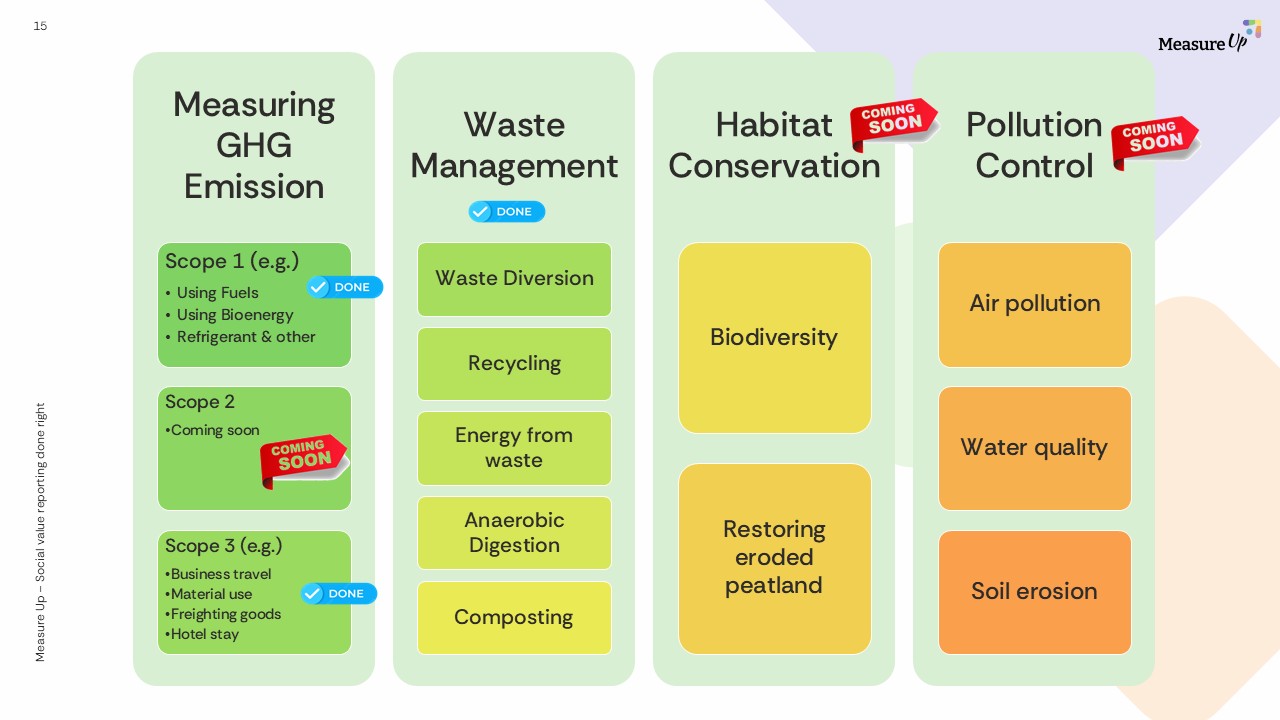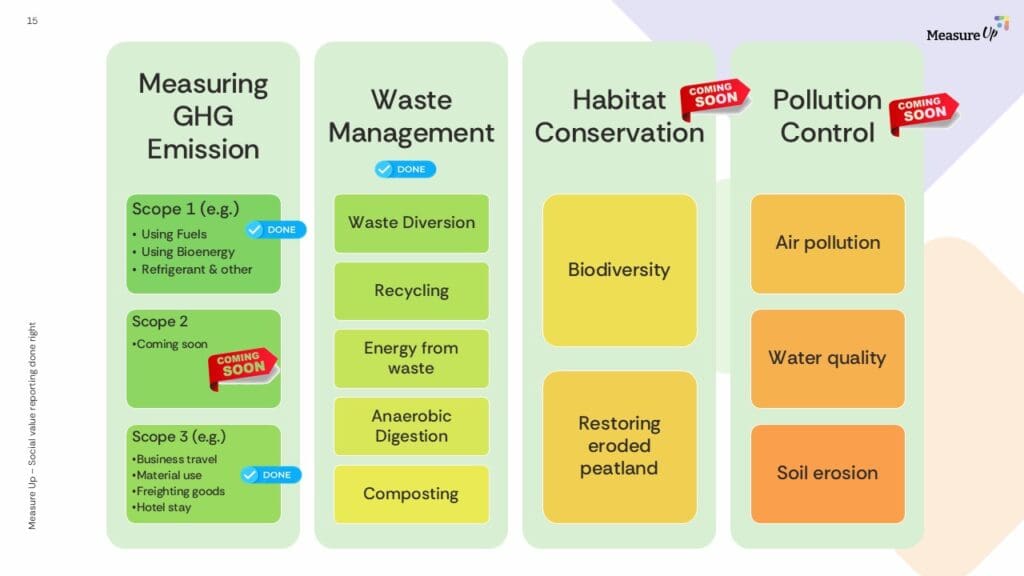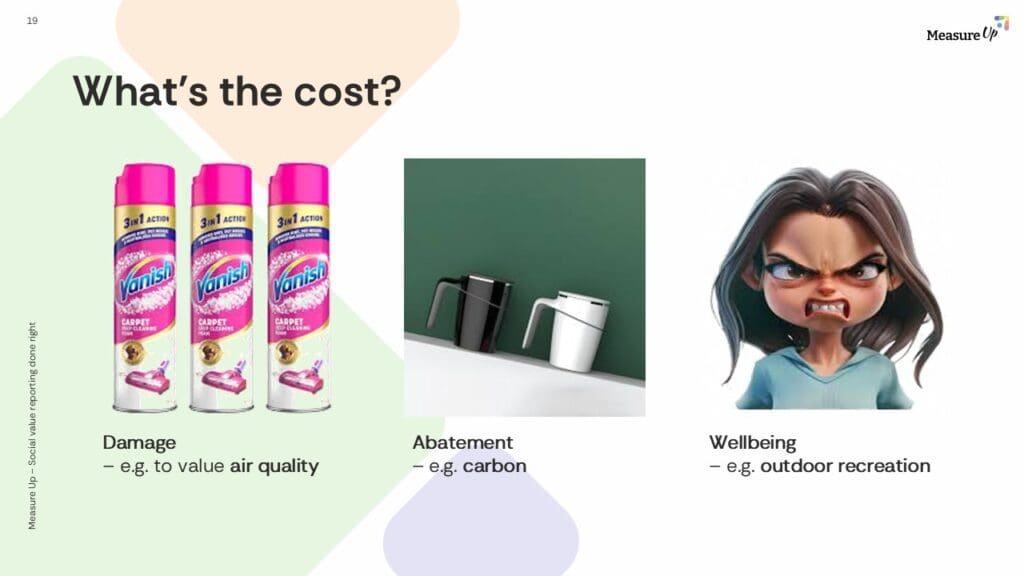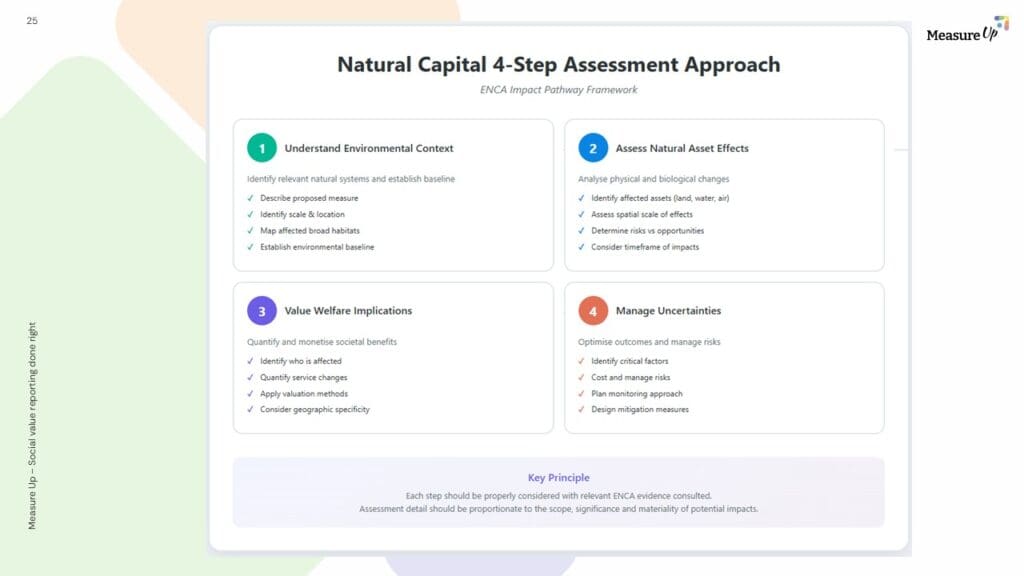[Webinar Recording] Beyond Carbon: How to Practically Measure Environmental and Wellbeing Impact
Posted: September 10, 2025
As the climate crisis escalates and social inequalities deepen, the need to measure what truly matters has never been more urgent. The recent MeasureUp webinar, “Beyond Carbon: Practical Environmental & Wellbeing Valuation,” brought together leading practitioners to explore how we can move past carbon-only metrics and towards a more holistic understanding of environmental and wellbeing impact.
Led by Catherine Manning (Head of Impact Practice at Impact Reporting and Programme Director for MeasureUp) and Alan Little (Chief economist at State of Life), the session provided a wealth of practical guidance and philosophical clarity. Here’s a helpful recap of what we covered.
Watch webinar replay and access deck
Access the presentation deck
Why Go Beyond Carbon?
Catherine began by placing the session in context: social value practice exists within a world of overlapping crises – environmental degradation, political instability, and widening inequalities. In this reality, our role as practitioners is not only to measure but to influence decision-making that leads to real change.
The aim? To account for what really matters to people and planet. That means going beyond financial proxies and carbon emissions to include all ten dimensions of wellbeing – especially the environmental factors that both affect and are affected by human activity.
What’s New in MeasureUp?
A key part of the session was the walkthrough of recent updates to the MeasureUp framework, particularly the expansion of its environmental valuation resources. Here are the specific developments:
New Proxy Values for Environmental Impact
- Scope 1 Carbon Emissions: Direct emissions from owned or controlled sources (e.g. fuel combustion on-site).
- Scope 3 Carbon Emissions: Indirect emissions from supply chains, commuting, waste disposal, and other upstream/downstream activities.
- Business travel by air, by land,
- Material use
- Freighting goods
- Hotel stay
- Waste Management: New values for avoided landfill, improved recycling rates, and waste reduction initiatives.
- Coming Soon: Values related to Scope 2, biodiversity, habitat restoration, air and pollution control, water quality and soil erosion are currently under development.

Subcategory Framework for Environmental Valuation
MeasureUp now organises its environmental proxy values into four practical subcategories:
- Greenhouse Gas Emissions (Scopes 1, 2, 3)
- Waste Management
- Habitat and Biodiversity Conservation
- Pollution Control
This structure reflects the real-world activities that practitioners are trying to assess and provides better alignment with frameworks like the Greenhouse Gas Protocol.
Enhanced Measurement Levels (Bronze to Gold+)
MeasureUp continues to support a progressive model of measurement:
- Bronze: High-level estimates, useful for planning and forecasting
- Silver: Group-level insights and disaggregated impacts
- Gold: Evidence-based measurement using primary data
- Gold+: Attribution analysis to determine how much of the impact is directly due to your activity
Importantly, the new guidance also introduces clearer language around negative values (disbenefits), helping practitioners avoid common pitfalls in environmental reporting (e.g. mistaking emissions for positive value).
These categories align with both UK policy tools and real-world practitioner needs, offering credible, progressive valuations that go beyond tokenistic carbon counting.
Valuation Methods: More Than Just Numbers
Alan Little then provided an accessible overview of how environmental valuation actually works in practice. He used the example of him tripping with a cup of coffee at home.
He outlined three core methods:
- Damage Costs – The cost of cleaning up environmental harm. (e.g. cost of carpet cleaning spray)
- Abatement Costs – The cost of preventing harm in the first place (e.g. spill-proof mugs vs cleaning the carpet).
- Wellbeing Impacts – Capturing how environmental changes affect our lives and communities. (e.g. a very unhappy spouse!)

These methods mirror those used in government economics and can be adapted to suit the scope and scale of social value projects. Alan stressed that valuation is the final step in a three-part process: describe, quantify, then value.
Practical Tools: The Green Book & ENCA
A key resource highlighted in the webinar is the Green Book supplementary guidance: Enabling a Natural Capital Approach (ENCA). Alan recommended its use even for non-government practitioners, calling it a gold standard for identifying and understanding environmental impacts.
The ENCA framework encourages project leads to consider:
- Could nature be part of the solution?
- Will the project affect land, water, air, biodiversity, or public amenity?
Answering these basic screening questions is a powerful first step in going beyond carbon and identifying broader environmental consequences.

Key Takeaways for Practitioners
- Environmental and social value are not separate – our natural world underpins wellbeing.
- Carbon is just one piece of the puzzle – look wider to make better decisions.
- Use what already exists – Green Book, ENCA, ONS, and MeasureUp are all excellent starting points.
- Valuation isn’t always necessary – not all cakes need icing. Describe and measure first.
- MeasureUp is evolving – with more values, clarity on measurement levels, and a stronger emphasis on attribution.
Questions? Get in touch with us at hello@measure-up.org